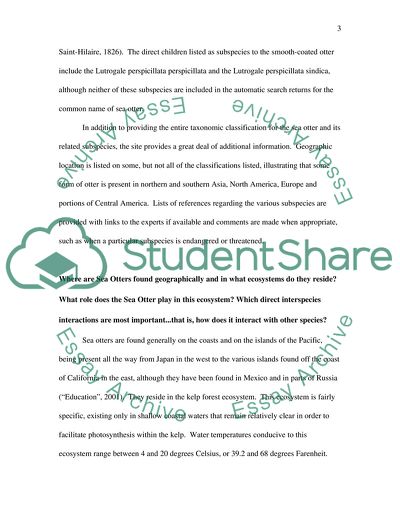Cite this document
(Population of Sea Otters Assignment Example | Topics and Well Written Essays - 2374 words, n.d.)
Population of Sea Otters Assignment Example | Topics and Well Written Essays - 2374 words. Retrieved from https://studentshare.org/biology/1705113-population-sea-otter
Population of Sea Otters Assignment Example | Topics and Well Written Essays - 2374 words. Retrieved from https://studentshare.org/biology/1705113-population-sea-otter
(Population of Sea Otters Assignment Example | Topics and Well Written Essays - 2374 Words)
Population of Sea Otters Assignment Example | Topics and Well Written Essays - 2374 Words. https://studentshare.org/biology/1705113-population-sea-otter.
Population of Sea Otters Assignment Example | Topics and Well Written Essays - 2374 Words. https://studentshare.org/biology/1705113-population-sea-otter.
“Population of Sea Otters Assignment Example | Topics and Well Written Essays - 2374 Words”, n.d. https://studentshare.org/biology/1705113-population-sea-otter.


